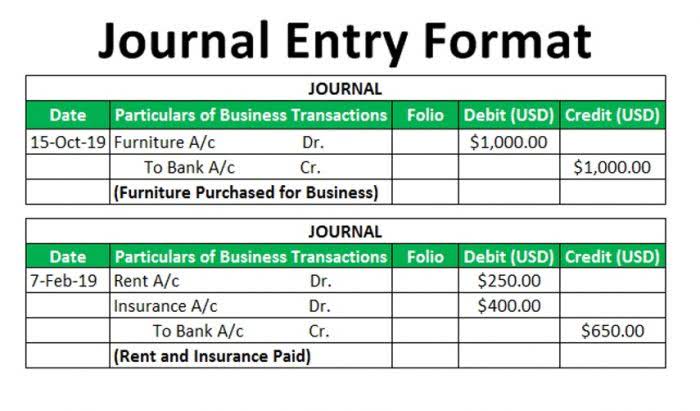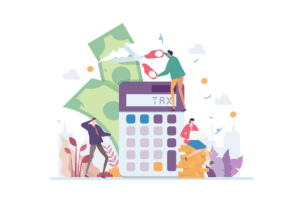Types of Liability Accounts List of Examples Explanations Definition
T y p e s o f L i a b i l i t y A c c o u n t s L i s t o f E x a m p l e s E x p l a n a t i o n s D e f i n i t i o n

Moreover, liability accounts are used in cash flow analysis to determine the sources and uses of cash in a company’s operations. In conclusion, liability accounts are an essential part of a company’s financial statements, and suppliers play a crucial role in a company’s supply chain. It is crucial to maintain good relationships with suppliers and keep track of accounts payable to ensure that a company has enough cash flow to pay its suppliers on time. Long-term debt represents loans or other financial obligations that have a maturity date of more than one year. Mortgage payable represents the amount owed on a mortgage for a property. Deferred tax liabilities represent taxes that will be paid in the future due to differences in accounting and tax rules.
Examples of Liability Accounts
When a customer purchases goods or services on credit, the business owes them a debt until the payment is made. The amount owed to the customer is recorded as a credit, and the corresponding transaction is recorded as a debit in the appropriate account, such as sales revenue or service revenue. However, liability trial balance accounts also represent an outflow of resources for a company.
What are the different types of liabilities in accounting?
In this article, we will list out examples of liability accounts and discuss the impact they have on business operations. Liability accounts are those that represent the obligations of a business to pay its debts and other financial obligations. Common examples of liability accounts include accounts payable, notes payable, salaries payable, taxes payable, and interest payable. Current liabilities are debts that are expected to be paid within one year or within the normal operating cycle of a business. These liabilities include accounts payable, wages payable, salaries payable, payroll taxes payable, sales taxes payable, unearned revenue, customer deposits, and accrued expenses. These accounts represent the company’s obligations to pay debts, taxes, and other expenses.
Types of Liability Accounts – Examples
- In business finance, a liability is an obligation that a company owes to other parties.
- Understanding the different categories of liability accounts can help individuals and companies make informed decisions about their financial health.
- Auditing liability accounts is an important part of the audit process, as these accounts represent the company’s financial obligations.
- When a company borrows money, it creates a liability on its balance sheet.
- The current month’s utility bill is usually due the following month.
- Liability accounts are an essential component of a company’s financial statements.
By properly tracking and managing these obligations, companies can make informed financial decisions and avoid cash flow issues in the future. Tax-related liability accounts are important because they represent a company’s obligation to pay taxes to the government. It is important for companies to accurately calculate and record their tax liabilities to avoid any issues with the government. This represents expenses that have been incurred but not yet paid for, such as salaries, rent, and utilities.
Understanding Liability Accounts

Liability accounts related to employees are essential for accurate financial reporting and management. By tracking these expenses, companies can ensure that they are meeting their obligations to their employees while also managing their financial resources effectively. Overall, liability accounts are an important part of debt financing.

They represent the debts and obligations that a company owes to its creditors and other entities. Accounting for liability accounts requires a thorough understanding of accounting principles and financial modeling techniques. Liability accounts are crucial in determining a company’s financial health and cash flow. They are used in financial modeling to forecast a company’s ability to meet its obligations and to assess its creditworthiness.

Accrued Expenses – Since accounting periods rarely fall directly after an expense period, companies often incur expenses but don’t pay them until the next period. The current month’s utility bill is usually due the following month. In other words, the creditor has the right to confiscate assets from a company if the company doesn’t pay it debts. Most state laws also allow creditors the ability to force debtors which of the following is liability account? to sell assets in order to raise enough cash to pay off their debts. Notes Payable – A note payable is a long-term contract to borrow money from a creditor. These debts usually arise from business transactions like purchases of goods and services.
Non-Current Liabilities
Liabilities refer HVAC Bookkeeping to short-term and long-term obligations of a company. Shaun Conrad is a Certified Public Accountant and CPA exam expert with a passion for teaching. After almost a decade of experience in public accounting, he created MyAccountingCourse.com to help people learn accounting & finance, pass the CPA exam, and start their career. These are due for settlement in more than one year, and almost always involve long-term borrowings. For the past 52 years, Harold Averkamp (CPA, MBA) hasworked as an accounting supervisor, manager, consultant, university instructor, and innovator in teaching accounting online.

Proper management of accrued expenses is essential for accurate financial reporting and cash flow management. Each classification on the balance sheet plays a distinct role in financial analysis. Current liabilities are crucial for liquidity analysis, while non-current liabilities are significant for understanding a company’s long-term financial stability. Overall, liability accounts related to customers are crucial for businesses to manage their financial obligations.

Katerina Monroe
@katerinam • More Posts by Katerina
Congratulations on the award, it's well deserved! You guys definitely know what you're doing. Looking forward to my next visit to the winery!
